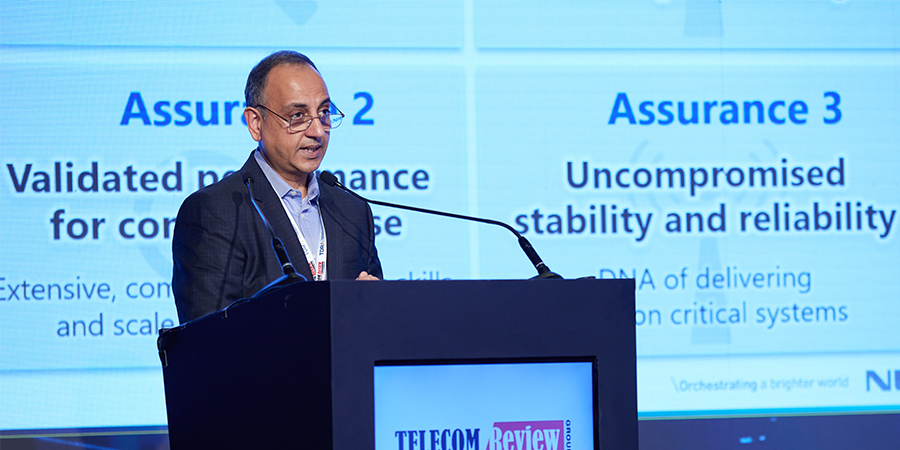Viplob Syngal, head of business development, NEC Open RAN, delivered his presentation, “The New Way to Build the Radio Access Network,” during the 16th edition of the Telecom Review Summit 2022 at the Intercontinental Dubai, UAE.
In an effort to establish a watertight case for the Open RAN technology, Viplob said, “My focus is to make a subset case for open networks.”
Highlighting the benefits of virtualization and cloudification, he said that using a pool of software developers to advance tailor-made network performance, resulting in low latency and high traffic speed, has now become a reality. “Lot of innovative companies have emerged doing just that,” he said.
“For better products, collaboration is the key. Collaboration between hyperscalers and operators is nothing new. We extend that magnitude of more developers, giving much more choice in the market. After all, it is not uncommon, even today, that incumbents partner with other companies and re-patch as their own solutions,” he noted.
He said that faster time to market is another attribute of Open RAN that helps to bypass complex interoperability testing and operation of the whole process. “The ability to switch hardware or software components without extensive discussions around proprietary solutions and making things work now becomes easier to implement reality,” he explained.
“This can translate into quicker introduction of solutions into the market with the potential to speed up the time to deliver new products into the networks.”
Reliability can be measured in two different ways: security around the supply chain, as different vendors have different logistics housed around the world, so there’s a potential to minimize inventory shortage risks. Combined with cloud computing and redundant server architectures, the network reliability will also increase.
He touched upon the total cost of ownership (TCO) aspect of OPEN RAN, saying “it’s the most debated topic on OPEN RAN right now.”
“Many of the benefits of the technology and the promise it brings that I highlight as a vendor, it is also coming from the operators themselves, as various proofs of concept have happened in the industry over the last 2 to 3 years,” he offered.
“As we move towards, commercial deployment, there is a tendency in the market to expect the TCO to be compatible with those of single RAN systems. However, we are making a change, and the change needs to be accompanied with a mindset change too. What is becoming apparent is that until the ORAN standards mature, there are costs that are incurred in terms of vendor management, system design, compatibility testing, etc. Over time, I expect these to reduce, in fact, be eliminated, compared to what is the case with SRAN system. However, if that’s how long it will take the operators to take the plunge, then all the progress that the industry has made towards open networks will be stalled,” he argued.
He said that the role of the system integrator is critical, but various different models are emerging, with some wanting to invest in ORAN. “It is important to have a good solution stack ecosystem focused on vendor and risk management and ensure that the comfort level with ORAN increases in areas such as rapid interoperability testing, as it is where the next value will come from,” he said.
In conclusion, he ended his presentation with a Pablo Picasso quote: “Others have seen what is and asked why. I have seen what could be and asked why not.”










